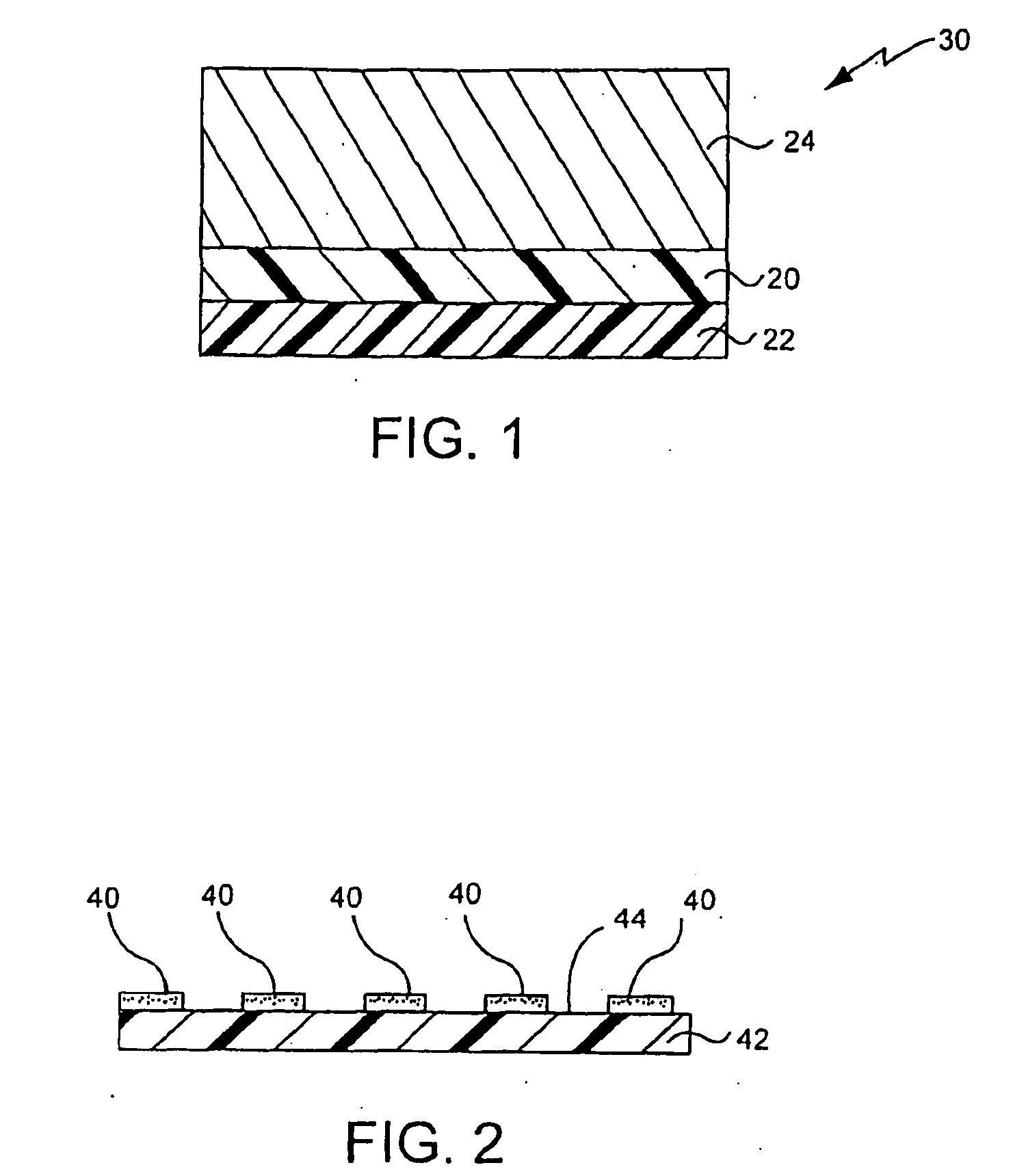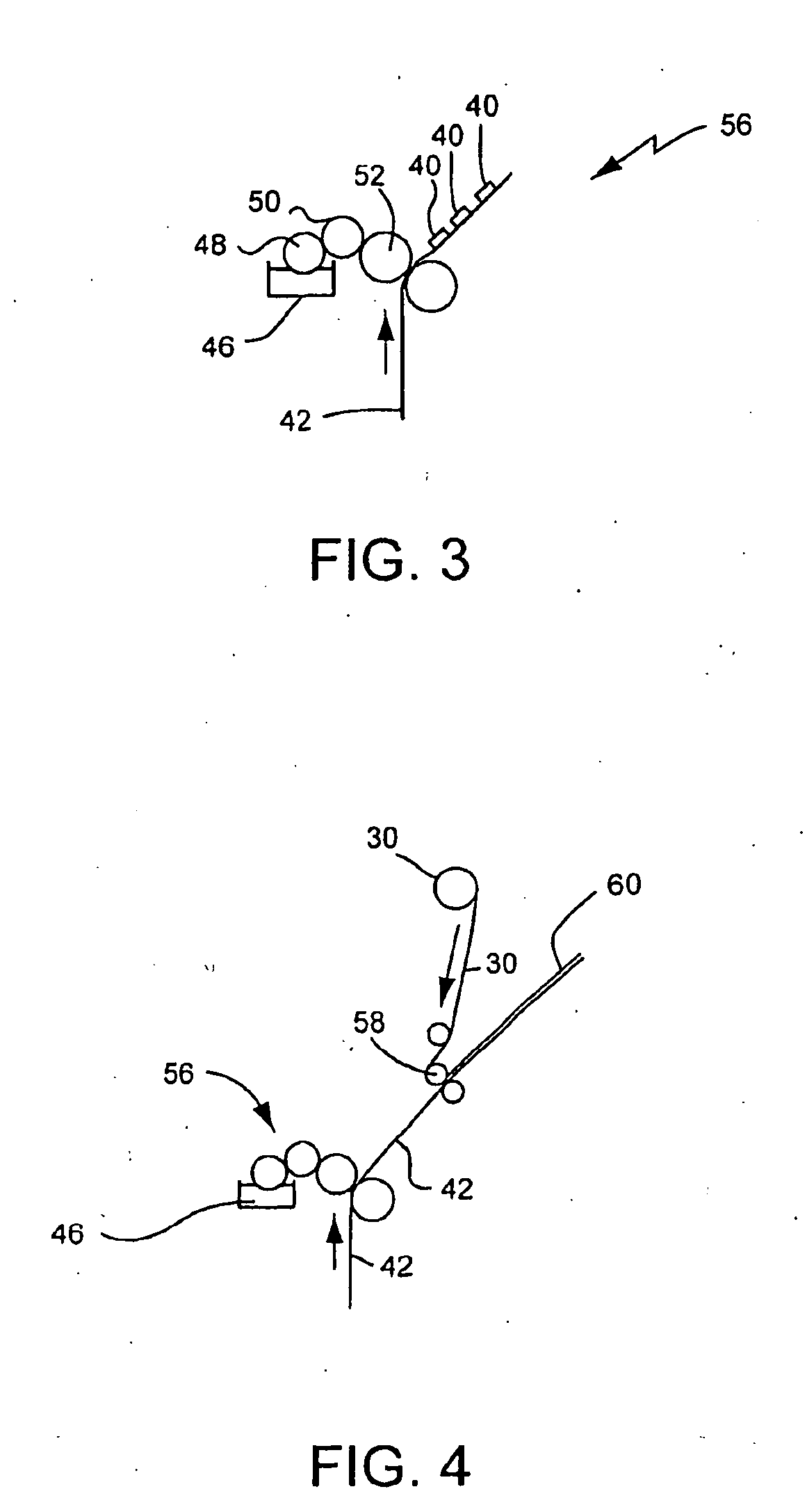Method and Material for Manufacturing Electrically Conductive Patterns, Including Radio Frequency Identification (RFID) Antennas
a technology of radio frequency identification and pattern manufacturing, applied in the direction of transfer patterning, instruments, chemistry apparatus and processes, etc., can solve the problems of disruption of conductivity, high cost of materials and inks, and exact etching types
- Summary
- Abstract
- Description
- Claims
- Application Information
AI Technical Summary
Problems solved by technology
Method used
Image
Examples
Embodiment Construction
[0027]As shown in FIG. 1, a method of producing an electrically conductive patterned metal film, such as an RFID antenna, includes forming an intermediate structure 30 by applying a layer of release coating 20 to a flexible layer of base polymeric material 22 and depositing a layer of conductive metal 24 over the layer of release coating 20. In one embodiment, the base polymeric material 22 can be polyolefin, such as polyethylene or polyethylene terephthalate (PET), polyester or thermoplastic polyester, such as polycarbonate, polypropylene, biaxially oriented polypropylene (BOPP), polysulfone or a combination thereof. The layer of base polymeric material 22 can be made to any suitable thickness, such as from about 0.1 mil to about 10.0 mil, such as about 0.6 mil, or from about 10 gauge to about 100 gauge.
[0028]Referring again to FIG. 1, the layer of release coating 20 is formulated to have a greater adhesion to the base polymeric material 22 than to the conductive metal 24 that is d...
PUM
 Login to View More
Login to View More Abstract
Description
Claims
Application Information
 Login to View More
Login to View More - R&D
- Intellectual Property
- Life Sciences
- Materials
- Tech Scout
- Unparalleled Data Quality
- Higher Quality Content
- 60% Fewer Hallucinations
Browse by: Latest US Patents, China's latest patents, Technical Efficacy Thesaurus, Application Domain, Technology Topic, Popular Technical Reports.
© 2025 PatSnap. All rights reserved.Legal|Privacy policy|Modern Slavery Act Transparency Statement|Sitemap|About US| Contact US: help@patsnap.com



